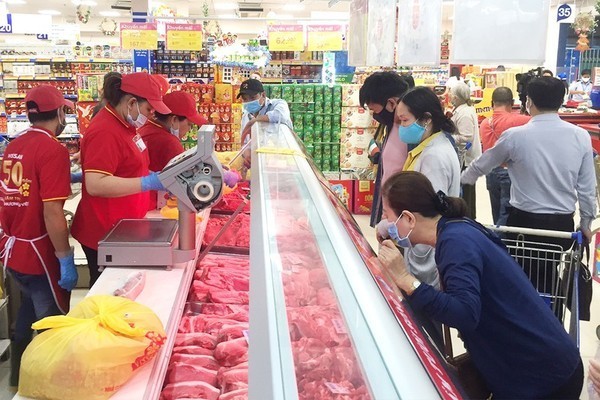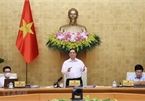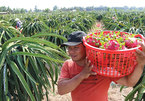
The General Statistics Office (GSO) has reported that the CPI increased by 1.47 percent in the first half of the year compared with the same period last year, the lowest increase since 2016.
The figure has surprised many people, because local media have reported sharp price increases of many products recently.
According to GSO, there were some factors that inhibited the CPI growth in H1. The prices of food products decreased by 39 percent compared with H1 2020, which caused the general CPI to decrease by 0.08 percentage point.
The government launched support packages to help people and businesses hit by Covid-19, including an electricity bill support package, which caused the average household-consumed electricity price to decrease by 3.06 percent, and made the general CPI decrease by 0.1 percentage point.
Meanwhile, people’s travel demand decreased because of the pandemic, which caused prices of package tours to fall by 2.85 percent.
| The government launched support packages to help people and businesses hit by Covid-19, including an electricity bill support package, which caused the average household-consumed electricity price to decrease by 3.06 percent, and made the general CPI decrease by 0.1 percentage point. |
Another reason behind the low CPI growth rate was the low demand. A representative of GSO said the total retail turnover of goods and services in H1 increased by 4.9 percent compared with 2020, which was a low growth rate if noting that the figures were always two-digit in 2018-2019.
According to Phu, many goods and logistics supply chains have been disrupted so far this year, which have affected the products that need transport means, thus pushing the prices up.
However, food and farm produce were not much affected by transportation costs, but they bore impact from social distancing campaigns. While a series of farm produce were in high harvesting season, the distribution got stuck because of social distancing. As a result, the prices of these products fell by 50-70 percent.
The low domestic demand was also cited by Nguyen Duc Do, deputy head of the Institute of Economics and Finance, to explain the low inflation rate at a workshop on market prices on July 2.
The total retail sales and consumer service revenue in H1 2021 increased slightly. Meanwhile, the index decreased by 5.77 percent in H1 2020 compared with H1 2019. So it can be inferred that the total retail sales and consumer services revenue in H1 2021 was still lower than the absolute value of 2019, which means it has decreased over the past two years.
Controlling inflation
After analyzing a series of factors that may affect goods and services, Phu said businesses and consumers in the last months had to bear both reasonable and unreasonable price increases while tightening their purse strings.
“The reported statistics just reflect 60-70 percent of the real situation,” Phu said.
However, the expert said this might not be the fault of the statistical agency. Some other economists also think the problem lies in the international method of choosing product items for calculating CPI and calculation method which are not completely suitable to Vietnam’s conditions.
“If unexpected things do not occur, the inflation rate of below 4 percent in 2021 is quite within reach,” said GSO General Director Nguyen Thi Huong.
The Department of Price Management said that the inflation risk in 2021 is not high and curbing the inflation rate at below 4 percent is quite feasible, if nothing special occurs.
“The Inflation control not only aims at fulfilling the targets assigned by NA, but also needs to satisfy the objectives of promoting growth, stabilizing the macro-economic foundation, supporting the fight against the epidemic, and serving as a leverage for production and business as well as stabilizing consumer psychology,” a representative of the department said.
“The control of the average CPI should also cover the control of the CPI in the same period in December, in order to create a foundation for controlling inflation in 2022,” he said.
Luong Bang

Economic target remains unchanged: Prime Minister
The economic growth target for this year remains unchanged with two scenarios of 6 percent and 6.5 percent expansion for this year, affirmed Prime Minister Pham Minh Chinh at a regular Government meeting held in Hanoi on July 1.

Stimulus sustained to ensure business performance revival
However, there has been no plan as yet to adjust the economic growth rate for the entire year, despite numerous difficulties ahead, with the speed of pandemic vaccinations in the country remaining slow.